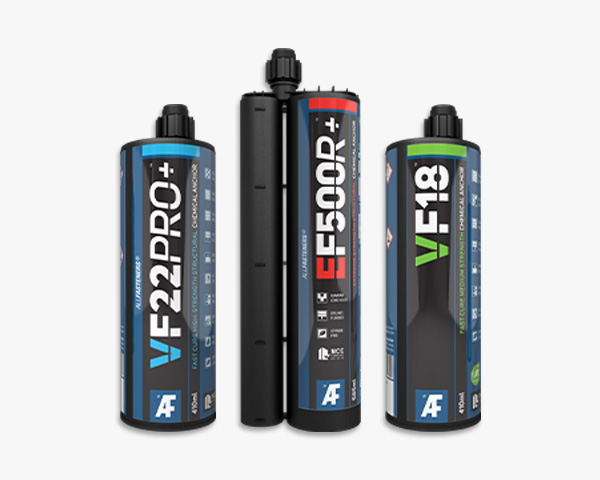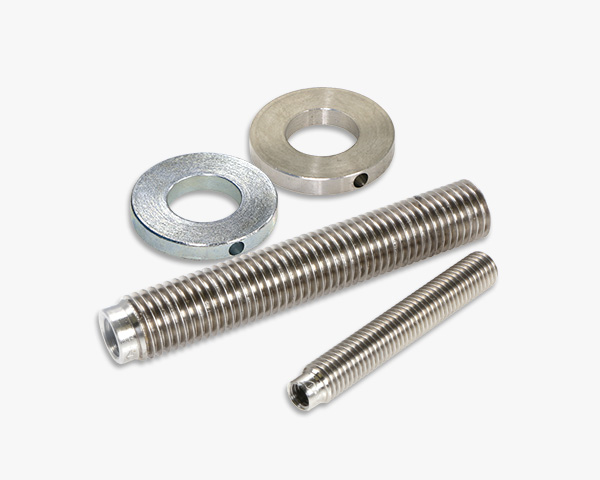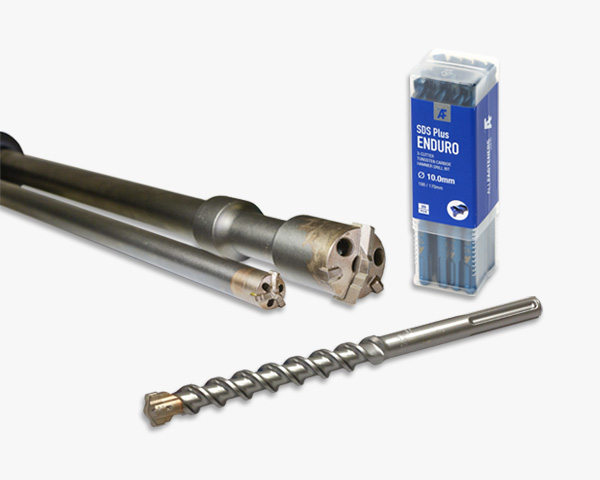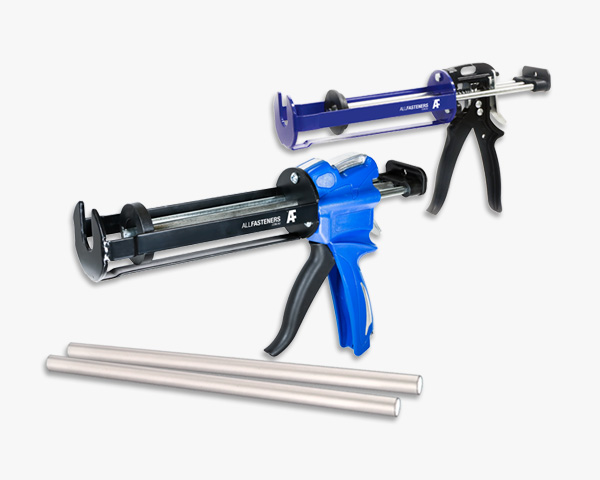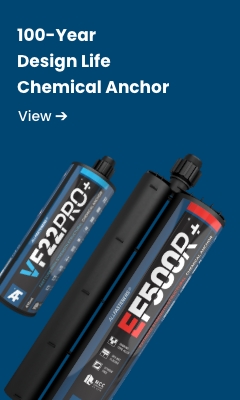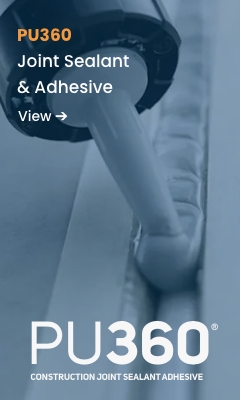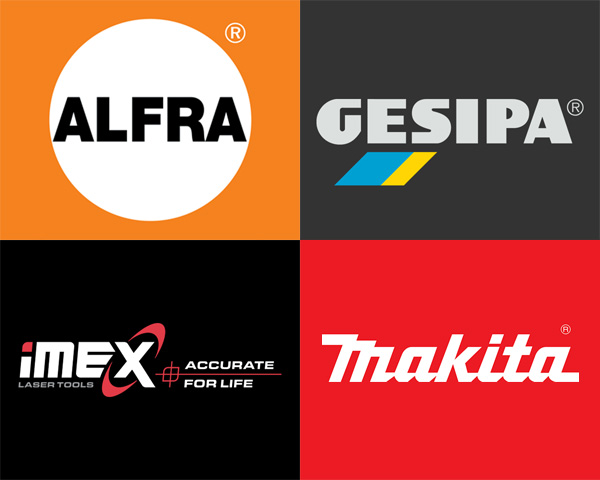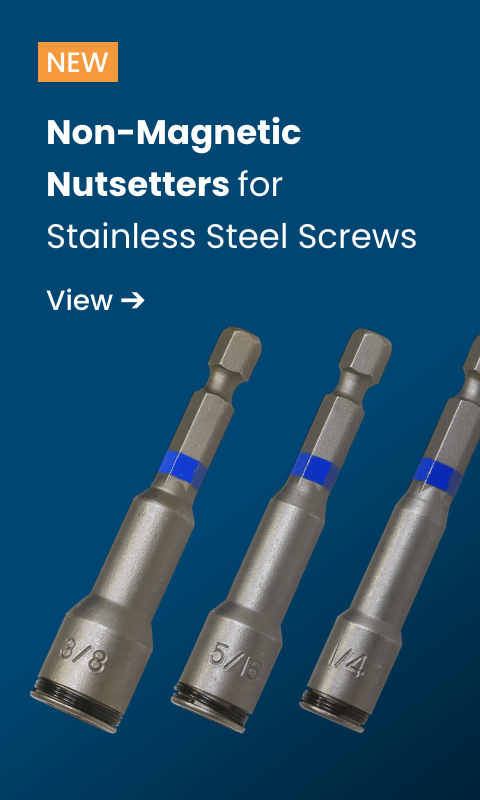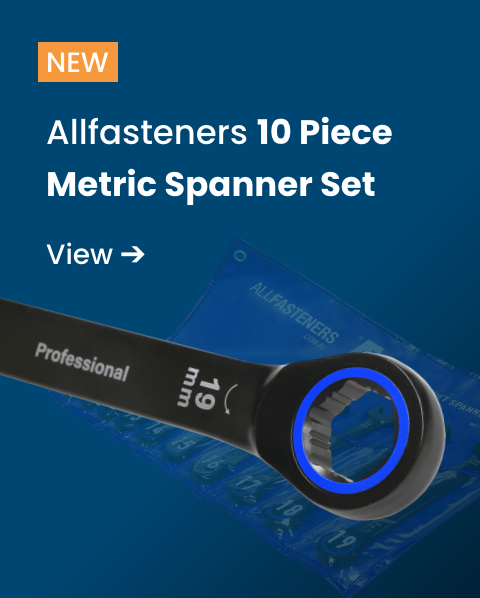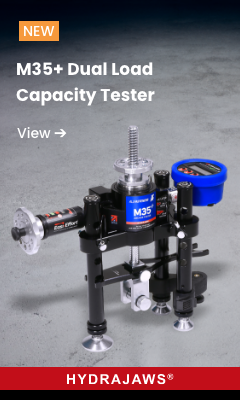What is a Chemical Anchor?
And Why Use Them?
Chemical anchoring is a technique for fastening to concrete and similar substrates that provides more flexibility than mechanical anchoring.
A mechanical anchor, such as a sleeve anchor, Dynabolt®, wedge anchor or drop-in anchor, is inserted in the concrete and expands upon tightening. This expansion causes the anchor to grip the wall of the hole and provide an extremely strong hold. Whilst being a very popular and economical option, there are, however, some limitations.
So, what is a chemical anchor’s advantage?
With chemical anchoring, a resin is injected into the hole prior to insertion of the stud creating a chemical bond between the steel and concrete. With this, the chemical naturally fills in all irregularities and therefore makes the hole airtight and water proof, with 100% adhesion.
And with mechanical anchors, each predetermined size—length (embedment) and diameter—has its own load capacity limits. Chemical anchors have virtually unlimited embedment depth, so you can embed any length of rod into the concrete to increase the load capacity. And when selected a higher grade of steel or larger-diameter rod, will also increase load capacity for tension and shear.
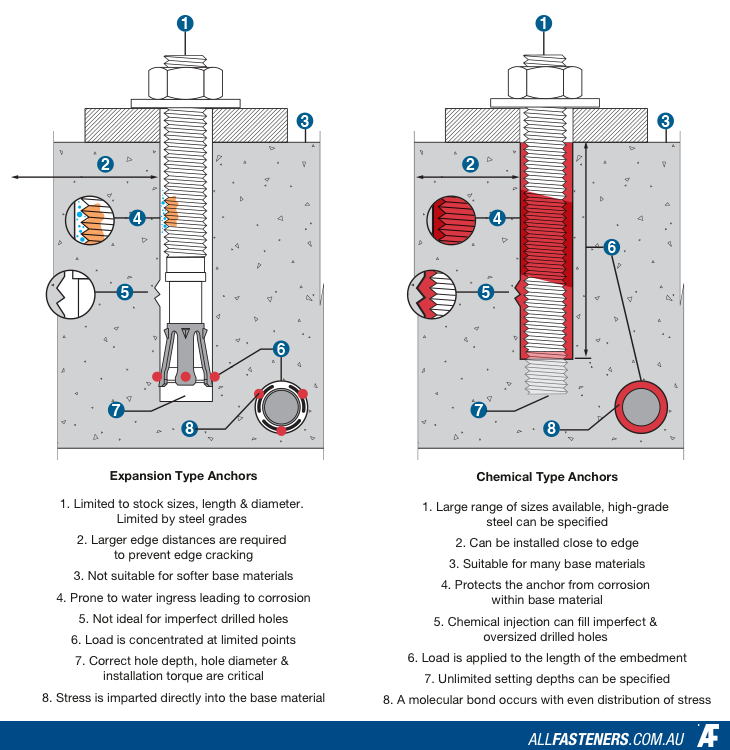
Chemical anchors —also known as chemset®—can also be placed towards the edge of concrete substrates and through masonry block. The non-expanding nature of a chemically-held rod drastically reduces the chance of the surrounding concrete cracking. This is very good for securing railings close to edge, or concrete stairs, and similar applications. Finally, chemical anchoring gives you the opportunity to make slight adjustments to the stud’s alignment during the chemicals open working time, whereas a mechanical anchor needs a hole to be drilled millimetre-perfect every time to correct depth and angle, and if it isn’t, it cannot be used.
The downside of chemical anchors, to some contractors, are that they are more complicated to install, and incorrect installation habits can jeopardize the anchor’s capacity. Following correct installation methods are critical, Allfasteners offers training and instruction in this. They may also be considered more expensive than mechanical anchors. However, apples should be compared to apples in this instance, as both fasteners are often used for very different things, especially when satisfying engineers’ requirements. Seek advice on this, if there is ever any doubt with what to choose.
What is a chemical anchor to Allfasteners?
See our own range of chemical injection systems and see why we lead the market for strength, compliance and value.
Dynabolt® and ChemSet® are registered trademarks of ITW Bulidex





